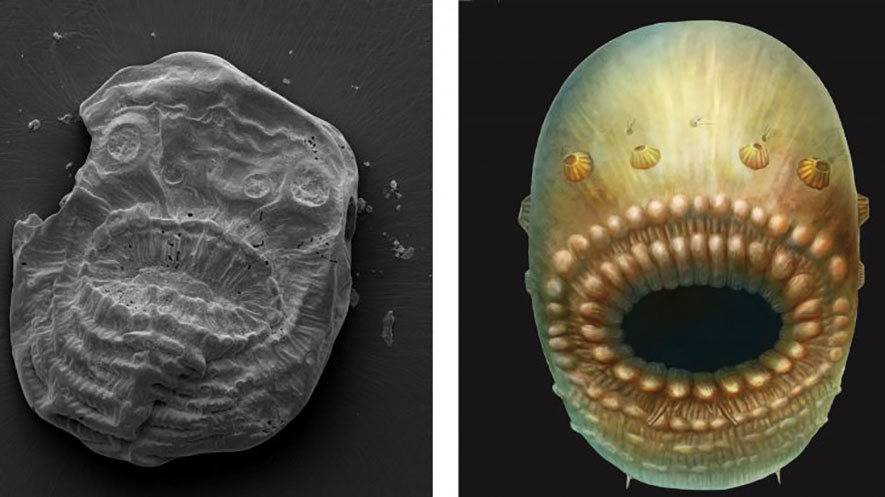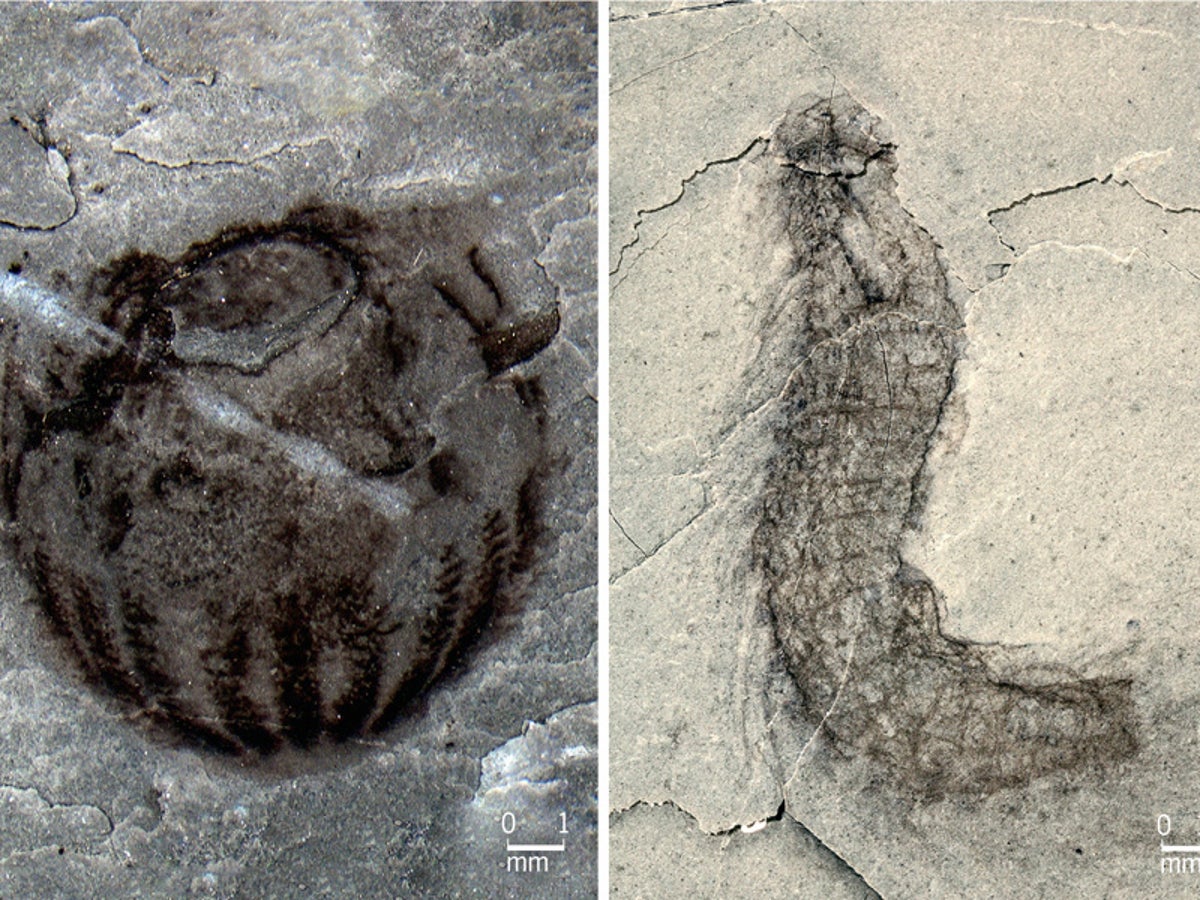A team of paleontologists has discovered several early Cambrian (535 million years old) fossils of kinorhynch worms, including the new species Eokinorhynchus rarus and two unnamed but related forms.

SEM images of Eokinorhynchus rarus. Abbreviations: A1-A20 – 1st to 20th trunk annulus; an – anus; cs – caudal spine; hsc – head scalid; ls – large sclerite; 1ls-5ls – 1st to 5th pair of large sclerites; mg – midgut; nsc – neck scalid; spl – small plate; ss – small spine; vls – ventral large sclerite. Image credit: Huaqiao Zhang et al.
These ancient worms are closely related to the ancestor of animal phylum Kinorhyncha (mud dragons), which includes about 240 extant species of exclusively marine, free-living worms.
“Kinorhynchs represent an animal group that is related to arthropods – insects, shrimps, spiders, etc. – which are the most diverse group of animals on the planet,” said team member Prof. Shuhai Xiao of Virginia Tech.
The body of kinorhynchs is divided into a head, a neck, and a trunk with 11 segments. According to the paleontologists, these microscopic worms offer an excellent model to investigate the origins of body segmentation.
“These creatures could provide clues to origins of body segmentation, but such efforts have been hampered by a lack of well-preserved kinorhynch fossils, until now,” said Prof. Xiao, who is a co-author of a paper in the journal Scientific Reports.
These fossils – Eokinorhynchus rarus (means ‘rare ancient mud dragon’) and two unnamed forms – were collected from the Dengying Formation in northern Sichuan Province and the Kuanchuanpu Formation in southern Shaanxi Province, South China.

“Although arthropod fossils date back to more than 530 million years ago, no kinorhynch fossils have ever been reported,” Prof. Xiao said.
“This is a huge gap in the fossil record, with more than 540 million years of evolutionary history undocumented. Our discovery is the first report of kinorhynch fossils.”
Prof. Xiao and his colleagues from China and the United States believe kinorhynchs and arthropods should have evolved more than 540 million years ago.

More so, they found that Eokinorhynchus rarus has a number of similarities with living kinorhynchs, suggesting a close evolutionary relationship.
Similarities between the fossils of Eokinorhynchus rarus and living, modern kinorhynchs include their hollow spines arranged in a five-fold symmetry and their body segments each consisting of articulated plates.

However, Eokinorhynchus rarus differs from modern species with more numerous segments. Hence the belief of an ancestorship.
“Future discovery of additional kinorhynch fossil will offer important insights into the early evolutionary history of this group of tiny and little-known animals,” Prof. Xiao said.
Source: sci.news








